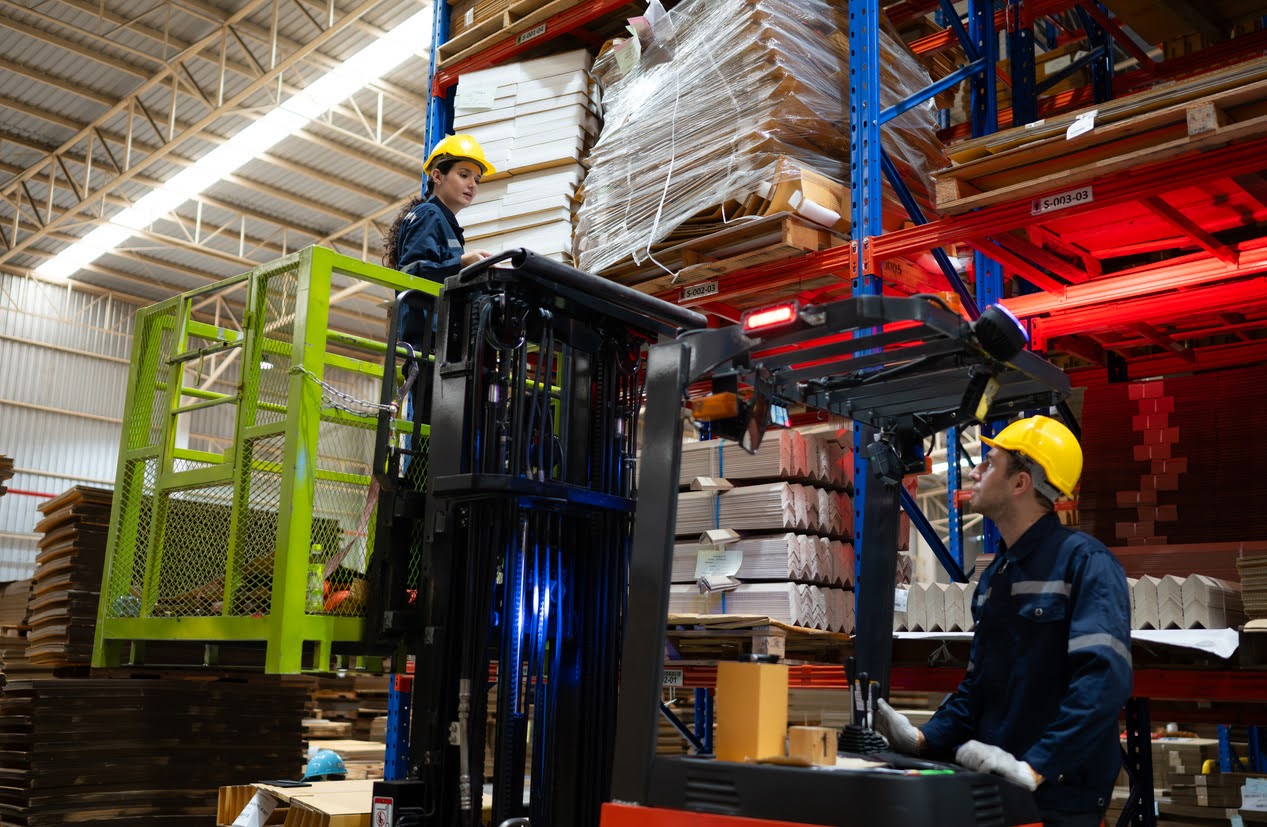When choosing the right forklift for your warehouse or worksite, the decision often comes down to counterbalance forklifts vs reach forklifts (also called reach trucks). Both play crucial roles in material handling, but their designs and applications are very different. Understanding these differences can help you decide whether you should buy a counterbalance forklift for versatile use or invest in a high reach forklift for maximising warehouse storage.
What is a Counterbalance Forklift?
A counterbalance forklift is one of the most common types of lift trucks used in industries worldwide. It gets its name from the heavy weight built into the rear of the forklift, which counterbalances the load lifted at the front.
Key Features of Counterbalance Forklifts:
- Available in electric, diesel, and LPG models
- High lifting capacity, suitable for heavy loads
- Simple and user-friendly design
- Works both indoors and outdoors
- Versatile for warehouses, factories, and outdoor yards
Because of its strength and adaptability, the counterbalance forklift (or lift truck) is ideal for businesses that need a machine capable of handling a wide variety of tasks.
What is a Reach Forklift (Reach Truck)?
A reach forklift, also known as a reach truck, is designed specifically for indoor warehouse environments. Its most distinctive feature is the extendable mast that allows the operator to lift and retrieve loads from high racking systems.
Key Features of Reach Forklifts:
- Primarily electric-powered for clean indoor use
- Compact size, perfect for narrow aisles
- Extendable forks to reach deep into racks
- Excellent visibility when lifting high
- Optimised for vertical storage and tight spaces
If your warehouse needs to maximise vertical storage, a high reach forklift is the best choice.
Counterbalance Forklift vs Reach Truck: Side-by-Side Comparison
Here’s a quick comparison to help you decide:
| Feature | Counterbalance Forklift | Reach Forklift (Reach Truck) |
| Power Options | Electric, Diesel, LPG | Mostly Electric |
| Best Use | Indoor & Outdoor | Indoor Only |
| Maneuverability | Needs more space | Compact, fits narrow aisles |
| Load Capacity | Higher, handles heavy loads | Moderate, designed for stacking |
| Reach Height | Limited height | Excellent for high racks |
| Versatility | Multi-purpose | Specialised for warehouses |
Pros and Cons of Counterbalance Forklifts
Pros:
- Works indoors and outdoors
- Higher lifting capacity
- Multiple fuel options available
- Easy to operate and train on
Cons:
- Requires more operating space
- Not suitable for narrow aisles
- Larger turning radius
Pros and Cons of Reach Forklifts
Pros:
- Excellent for navigating narrow aisles
- Can reach high shelves with ease
- Improves vertical storage capacity
- Electric-powered and eco-friendly
Cons:
- Limited to indoor environments
- Lower lifting capacity compared to counterbalance forklifts
- Not suited for uneven or outdoor surfaces
Which Forklift is Best for Indoor and Outdoor Use?
If you’re wondering “what is the best forklift for indoor and outdoor use?”, the answer is simple: the counterbalance forklift. Its strong build, higher weight capacity, and ability to operate on different terrains make it the most versatile option.
For purely indoor environments, especially warehouses with high stacking needs, a high reach forklift (reach truck) will be the smarter choice.
Choosing the Right Forklift for Your Business
Before you decide to buy a counterbalance forklift or buy a high reach forklift, consider the following:
- Operating Environment: Indoor, outdoor, or both?
- Load Requirements: Heavy loads vs vertical stacking
- Space Availability: Wide spaces or narrow aisles?
- Operator Skill Level: Simpler machines like counterbalance forklifts are easier for beginners, while reach trucks require specialised training.
If your operations demand flexibility, counterbalance forklifts are the answer. If you want to maximise warehouse storage space, choose reach forklifts.
Conclusion
The choice between a counterbalance forklift vs reach forklift depends on your operational needs. If you need a versatile, heavy-duty machine that works in both indoor and outdoor spaces, go for a counterbalance forklift. If you want to maximise storage capacity in narrow warehouse aisles, a reach forklift (reach truck) is the perfect fit.
For expert guidance and a wide range of forklifts to suit every need, explore Active Forklifts’ sales and hire options in Sydney—whether you want to buy counterbalanced forklifts or invest in high reach forklifts, the right solution is waiting for you.
Frequently Asked Questions
Q: What is a counterbalanced forklift?
A counterbalance forklift (or lift truck) uses a heavy rear weight to balance loads lifted at the front. It’s versatile for indoor and outdoor use.
Q: What is a reach forklift?
A reach forklift, or reach truck, is an electric-powered warehouse forklift with an extendable mast, ideal for stacking goods in high racking systems.
Q: What is a high reach forklift?
A high reach forklift is a type of reach truck designed for maximum vertical reach in tall warehouse shelving.
Q: Difference between forklift and reach truck?
A forklift (like a counterbalance) is built for heavy loads and outdoor use, while a reach truck is designed for indoor, high-rack storage.
Q: Is a counterbalanced forklift the same as a lift truck?
Yes, the term “lift truck” is often used interchangeably with “counterbalance forklift.”




